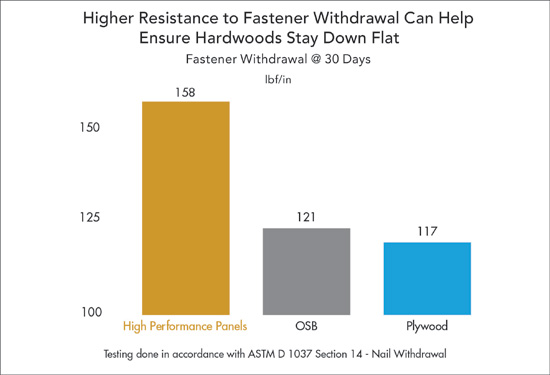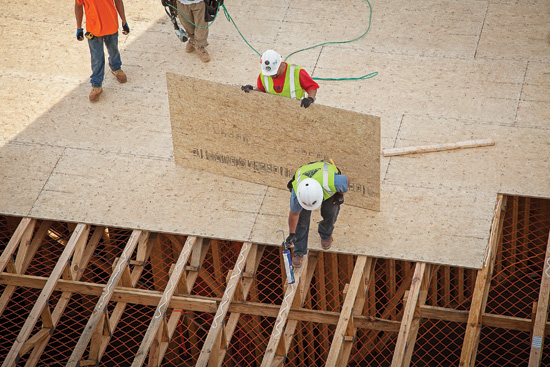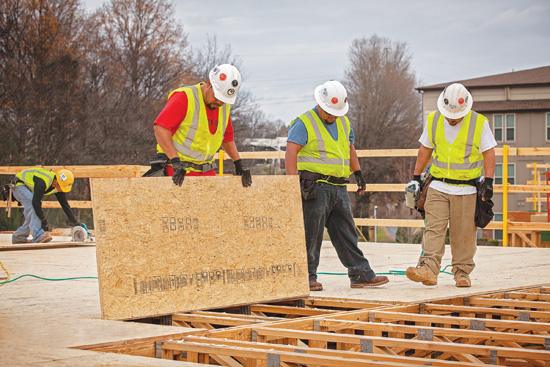Subfloor as a Hidden Asset
Fastener Holding Strength
How well a hardwood floor resists pulling away from the subfloor depends heavily on how well it's fastened. The denser the subfloor, the more friction it places on the fastener, and the more force will be required to loosen the fastener. High-performance panels offer a 10 percent better calculated fastener holding power than PS-2 standard of plywood or OSB, which translates directly to a decrease in the number one complaint of homeowners: squeaky floors. As can be seen in the chart on the previous page, after 30 days of exposure, high-performance panels performed significantly ahead of OSB and plywood.

Chart courtesy of Huber Engineered Woods © 2014
Installation—The Other Half of the Equation
In addition to selecting the right subfloor material, the other part of the equation for good performance is ensuring the right installation. Even the best subflooring will have performance issues if it is installed incorrectly.

Both glue and mechanical fasteners should be used for a solid installation.
Photo courtesy of Huber Engineered Woods © 2014
Expansion Gap
The panel manufacturer's recommendations for spacing and fastening should be followed. Typical panel spacing and fastening requirements over truss/joist systems call for approximately 1/8-inch expansion gap around the perimeter of each panel, which is consistent with National Wood Flooring Association (NWFA) recommendations. Note that this is commonly achieved along the 8-foot edge using self-spacing tongue and groove profiles, but the 4-foot cut edge must be carefully reviewed to ensure proper spacing since it is often missed in the field. If there is not sufficient expansion space, a circular saw can be used to cut in the specified space. Some manufacturers offer instructions on the surface of the panel to educate installers on the proper spacing for the panels.

Photo courtesy of Huber Engineered Woods © 2014









